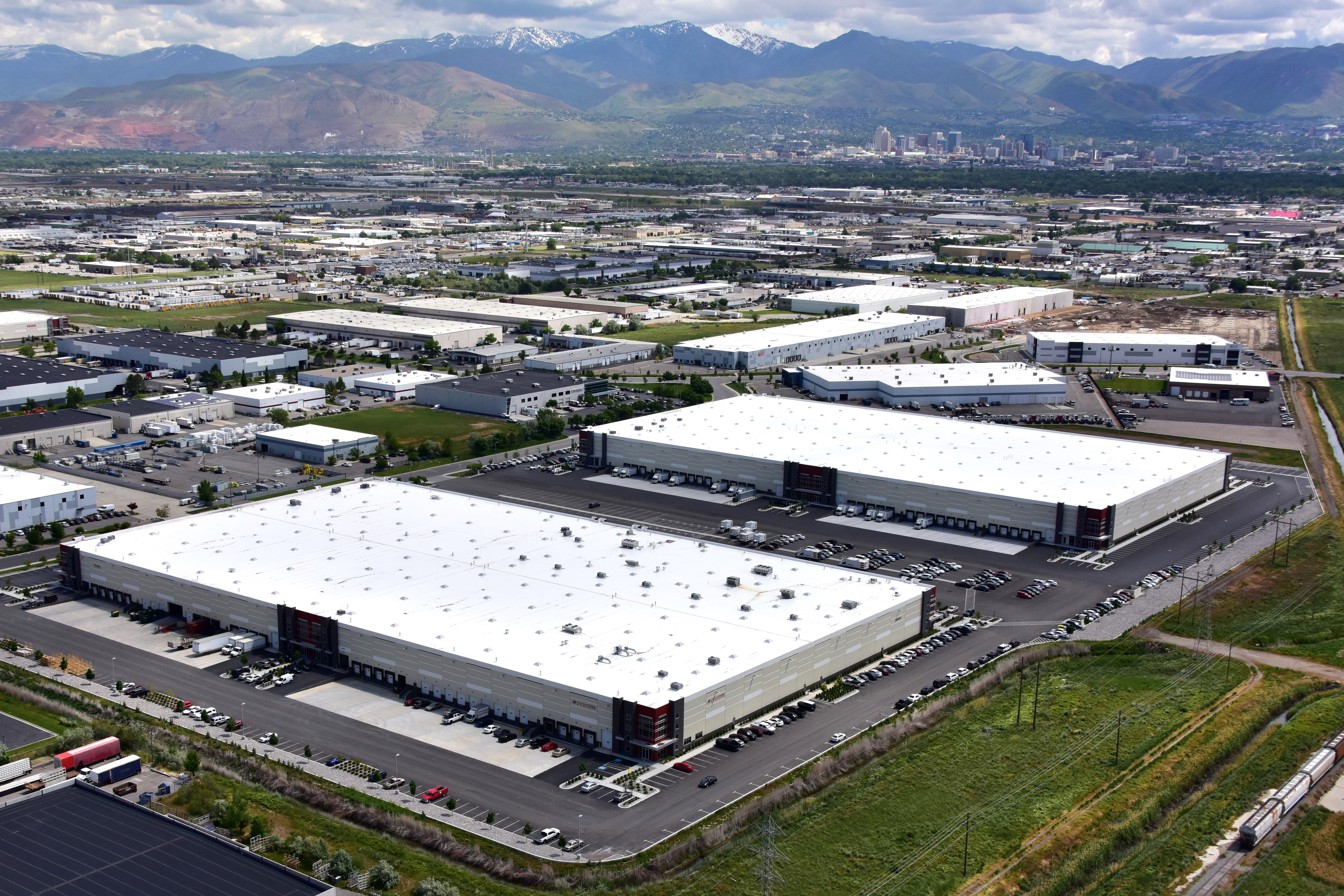Diversification and Growth: Five Questions for Slade Opheikens of R&O Construction

May 19, 2020
R&O Construction, a long-time EDCUtah investor, celebrates its 40-year anniversary this year. With about 180 employees across its offices in Ogden, Salt Lake City, and Las Vegas the company works on projects ranging from retail to multifamily and even industrial construction. Among their active projects, some of the most notable are the The Green on Campus Drive Student Housing at Utah Valley University and Northrop Grumman’s new Innovation Center at Hill Air Force Base. We caught up with the company’s second-generation CEO, Slade Opheikens, to learn more about their company and how they’re adapting in the age of COVID-19.
R&O describes itself as intentionally diversified. Can you explain what you mean by that?
SO: Absolutely. Back in 2000 we were one of the premier retail contractors in the market, with 90% of work in that sector. We realized that we needed to diversify and so we stepped into the multifamily market. One of the first projects we worked on after this move was the Gateway housing project for the 2002 Winter Olympics. We also did affordable/multi-family housing projects in California.
We continued to diversify our portfolio as time progressed, but our resume still didn’t include larger-scale projects, so it was difficult to land jobs over $20 million. Then when the 2008 recession hit, we made the decision to enter the federal market, and that really helped us expand our portfolio.
In 2015 and 2016, we saw things pick back up in the Utah and Nevada markets and we were starting to be considered for, and winning more and more larger projects, including a couple over $100 million. Even as we’ve continued to diversify, we maintain a focus on those clients that helped us get where we are today and make sure we continue to help those who helped us. We continue to support Smith’s, Harmons, Associated Foods, and Maverik.
In general, how do you find Utah different from the other states you do business in?
The most notable difference is that as a state, Utah has been fiscally well managed. Further, the state is predictable and stable when it comes to what to expect from the business environment and economy.
Even the recessions here don’t spike as sharply up or down and are more manageable overall; they typically don’t put people out of business. In other states, companies will go crazy with expansions during a boom and then a recession hits and within weeks or months many of them go out of business. It’s business as usual for our construction projects here in Utah; that is while adhering to health department guidelines of course.
Another thing Utah has that we don’t see in other states is the cooperative mentality, where everyone is willing to work together to ensure the best outcome. The State makes it really easy to do business here. The government is on the side of business and its citizens, and you don’t see that very much elsewhere. There are opportunities for professional networking and for cities and municipalities to get together and coordinate, thanks in part to the events hosted by EDCUtah and other organizations. Those are also opportunities for us to find business here.
What trends are you seeing in the industry?
In the past five years we’ve had low unemployment here in Utah and that has led to a spike in the cost of quality labor. We anticipate that this will flatten outa bit as a result of COVID-19 and the growing unemployment numbers.
We’ve also been seeing more variation in delivery methods; specifically, we’re seeing methods of delivery that allow architects, builders, and owners to collaborate on projects earlier in their development. The construction community is also working on smarter procurement and developing relationships on the front end to make it easier and more profitable for everyone on the backend.
In terms of the market overall, COVID-19 is accelerating the changes we were already seeing in the retail market, with the exception of grocery stores, which are doing well.
What are the biggest challenges facing the construction industry right now?
That’s easy: tell me what the rule will be tomorrow. Guidelines have been shifting constantly as more is learned about this virus. I will say, in Utah, Governor Herbert and OSHA have been clear from the beginning what the expectations are. We’ve experienced the exact opposite with our worksites in neighboring states. In the last five weeks, we’ve revised our safety guidelines twice for projects outside of Utah.
We are constantly having to adjust to ensure we are following the guidelines of the different states, counties, and cities and that we are checking to see that we are still considered an essential business within each. We’re also having to deal with the potential stress of one of our subcontractors testing positive and making sure our employees are safe. Having clear guidelines and safety protocols gives us peace of mind and means we’re ready to respond efficiently.
How do you interact with EDCUtah?
Since we’re headquartered in Ogden, I am serving on the board for the Northern Utah Economic Alliance, with Chris Roybal and Theresa Foxley. That’s been one of my greatest experiences of working on a board. It’s great to be able to support the region and see all the work Chris and your team is doing to promote the area as well.
We also try to maintain relationships with the business development managers and keep tabs on what projects are act. Kamie Geiger from our team has really taken the lead on that. And finally, we are always happy to help out with site visits wherever possible.
Bonus question: What innovations and best practices do you think will come out of the pandemic?
I think like many businesses, there were things that we had been talking about doing for two or three years now but never actually gotten around to implementing. Now we’ve implemented those changes in the last couple weeks out of necessity. We’ve moved all of our orientation online. All the paperwork is digital now, so we’re not passing paper and pens between employees, or having too many people in the room. We’ve also moved our site meetings online, so there’s a new efficiency there, where we’re not driving up to Park City for an hour meeting. I think as more people have become comfortable with video conferencing; we will see it become more commonplace.
And I think the current situation has us refocusing on our role in philanthropic activities. We’re lucky in construction – we’ve had to adapt how we work but we’re still working. There are many people out there not so lucky. After some conversations with people in tough circumstances, I called the city of Ogden and we’re now supporting the city’s funding to help small businesses get through this. R&O donated $100,000 to Ogden City’s Emergency Loan Fund, which provides small businesses loans up for working capital to help with expenses such as rent and payroll. Our business is part of an ecosystem that is supported by many, many local small businesses. Because we’ve been so fortunate, we wanted to help these small businesses in a meaningful way.
For more information about R&O visit: https://www.randoco.com/.
For more information about the Ogden donation, click here.






